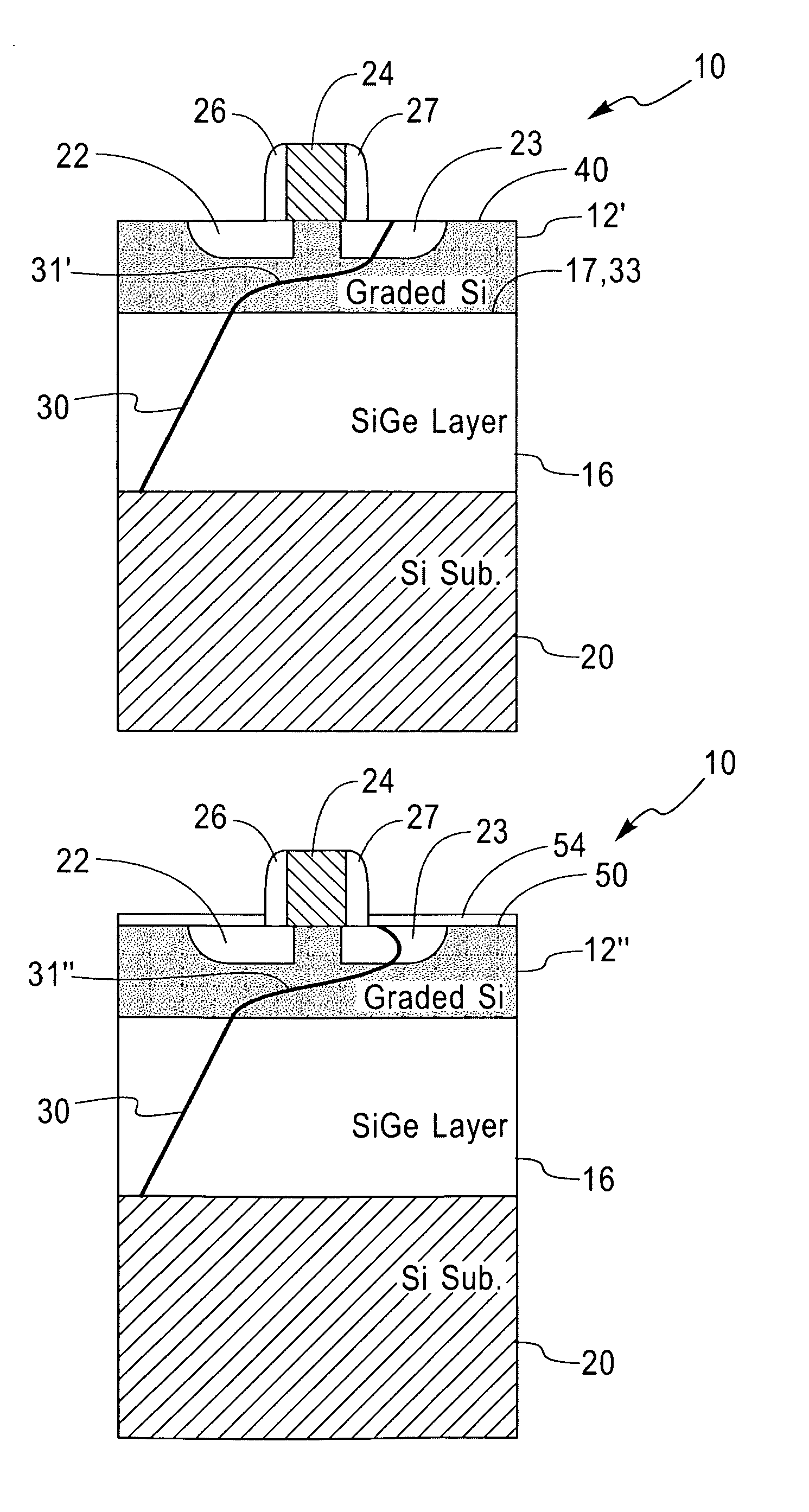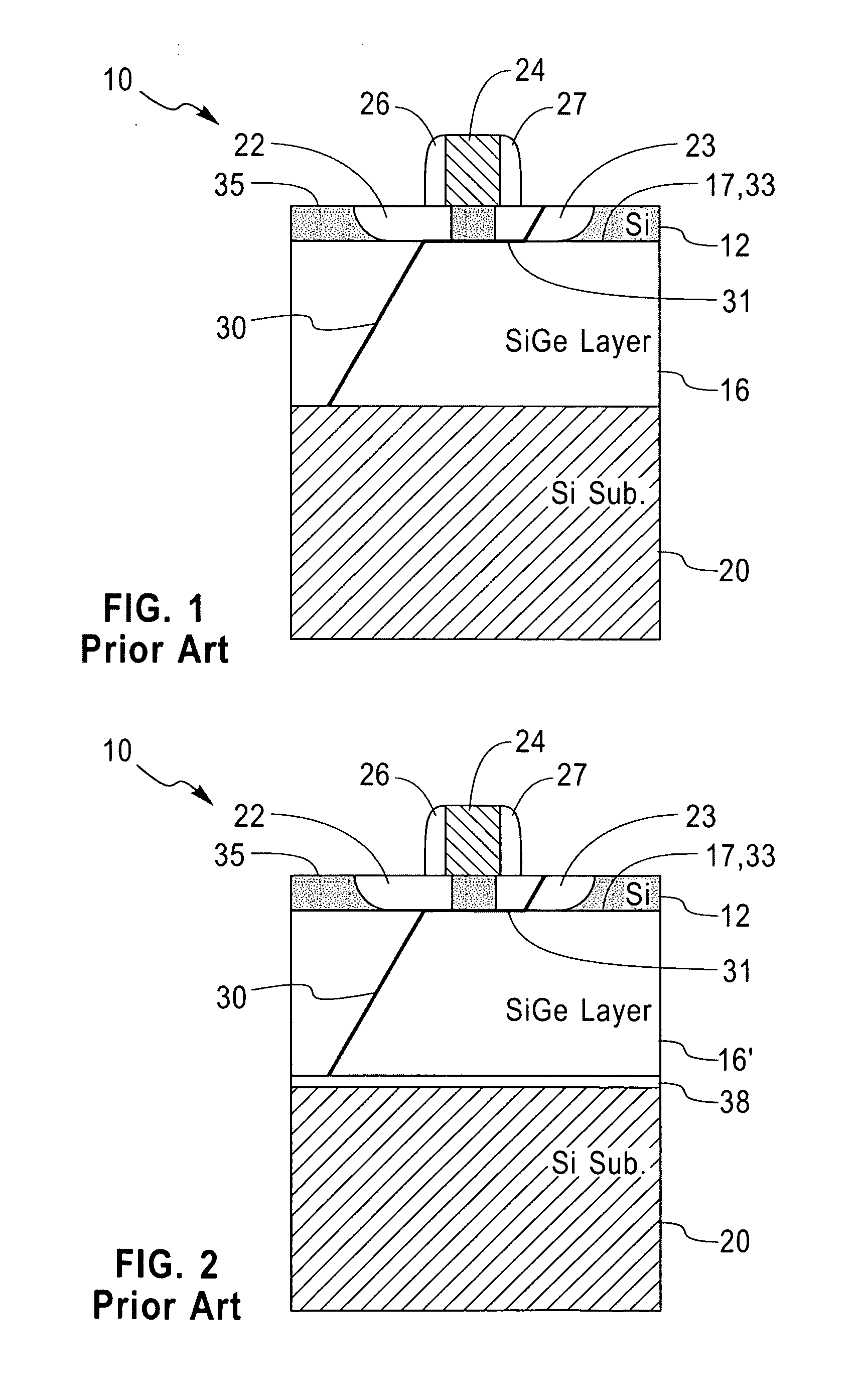Structure and method for controlling the behavior of dislocations in strained semiconductor layers
a technology of dislocation and semiconductor layer, applied in the direction of semiconductor devices, basic electric elements, electrical apparatus, etc., can solve the problems of device failure associated with crystal defects, little s/d region left to use, and the extent and integrability of such approaches becomes quite difficult, so as to reduce the probability of shorting the s/d region of fets and reduce the effect of diffusion
- Summary
- Abstract
- Description
- Claims
- Application Information
AI Technical Summary
Benefits of technology
Problems solved by technology
Method used
Image
Examples
Embodiment Construction
[0017]FIG. 1 shows a cross section view of a MOSFET 10 formed on a strained semiconductor layer 12 which may be Si or Si containing. Strained layer 12 is formed over a SiGe layer 16 which in turned is formed over a substrate 20. Strained layer 12 may be formed by epitaxial deposition over SiGe layer 16. SiGe layer 16 may be epitaxially deposited over substrate 20 which may be single crystalline. The amount of Ge in layer 16 may be increased with layer thickness and then relaxed to form a crystal lattice spacing greater than the future lower surface of layer 12 to cause global bidirectional strain in layer 12. Thus, layer 16 may be graded SiGe up to the upper surface 17 of layer 16. Layer 12 may be of constant Si or SiGe composition.
[0018] Alternatively in place of SiGe graded layer 16, layer 16 may be a Silicon Germanium on Insulator (SGOI) as shown in FIG. 2.
[0019] In FIGS. 1-5, MOSFET 10, has a source 22, drain 23 and gate 24. Sidewall spacers 26 and 27 are also present. Source ...
PUM
 Login to View More
Login to View More Abstract
Description
Claims
Application Information
 Login to View More
Login to View More - R&D
- Intellectual Property
- Life Sciences
- Materials
- Tech Scout
- Unparalleled Data Quality
- Higher Quality Content
- 60% Fewer Hallucinations
Browse by: Latest US Patents, China's latest patents, Technical Efficacy Thesaurus, Application Domain, Technology Topic, Popular Technical Reports.
© 2025 PatSnap. All rights reserved.Legal|Privacy policy|Modern Slavery Act Transparency Statement|Sitemap|About US| Contact US: help@patsnap.com



